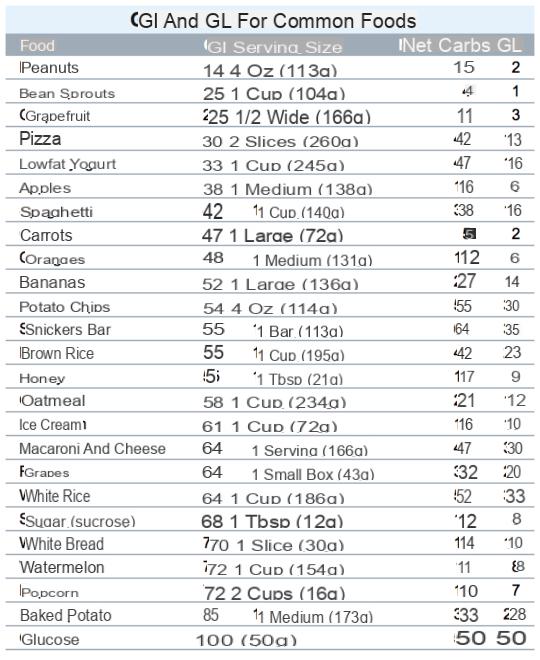
by Serena Allevi
Often there is a tendency to confuse theindex glicemico with the glycemic load of food. In general, the glycemic index has been much discussed in recent years. And not only in correlation with the diabetes but also to underline its importance for the health of everyone, young and old. And not only: theindex glicemico of a food is a variable to consider if you need to lose weight and set a weight loss diet.
Let's clarify the meaning of glycemic load of foods, correlated value but different from the glycemic index.
Glycemic load: what it is
So what is meant by glycemic load (CG) food? The glycemic load is essentially the effect exerted on glycemia by a specific food but, unlike the glycemic index, in this case based on the amount of carbohydrates actually consumed. Consequently it is a more suitable parameter for calculate the ideal daily consumption of the various foods relying on their carbohydrate content.
Differences with the glycemic index (GI)
The glycemic index, on the other hand, is a parameter that classifies foods according to their "effect" on glycemia (blood glucose level). Specifically, the GI allows you to calculate the ability of a given food to raise the blood sugar level after a meal compared to the reference standard, which is pure glucose. In practice, to define the GI we measure theincrease in blood sugar as a result of the intake of 50g of carbohydrates contained in that given food. The value obtained is then compared as a percentage to a standard value (equal to 100), i.e. the rise in blood sugar recorded following the intake of 50g of pure glucose.
Based on these parameters, i foods with a very high glycemic index are those that fall within the range of 100-70 values, the index is intermediate instead for the values between 69 and 55, finally it is low below the threshold of 55. These values, generally collected in reference tables, however, they are indicative and therefore not "exact", since they can be influenced by various other characteristics of the food, such as the degree of ripeness, cooking, the presence of fibers.
Il glycemic load, on the other hand, is a more complex and complete quantity since it considers the amount of carbohydrates actually consumed during the meal: for example, to the extreme, if it is true that apricots have the same GI as spaghetti, it is equally true that to take the same amount of carbohydrates present in pasta it is necessary to consume seven times more apricots. To calculate the glycemic load, therefore, it is necessary multiply the Glycemic Index of a food by the amount (expressed in grams) of carbohydrates present in the portion of food eaten.
It goes without saying that this value represents the magnitude of choice for setting up an effective slimming program or for determine the most suitable diet to those who need to pay attention to their blood sugar (diabetics, pregnant women).
The low glycemic load diet
While in the past, therefore, attention was focused on the glycemic index of foods, today we prefer to consider the glycemic load and, therefore, refer to the amount of carbohydrates consumed (and in parallel also to the GI, already included in the GC).
The low glycemic load diet, which must be set up with the specialist, strictly avoiding do-it-yourself, in fact allows you to lose weight (and to control blood sugar) by also eating carbohydrates such as bread and pasta but in the right quantities. That is, the ability of foods to impact blood sugar (GI) is adapted to the portion that is actually consumed (CG).
This kind of perspective, more complete, pays off the diet is also much more varied, less boring and more balanced. To obtain a low glycemic load meal, carbohydrates (complex, because with a lower GI than simple carbohydrates), proteins and vegetables are combined. All following one simple but very precise quantitative scheme.


























